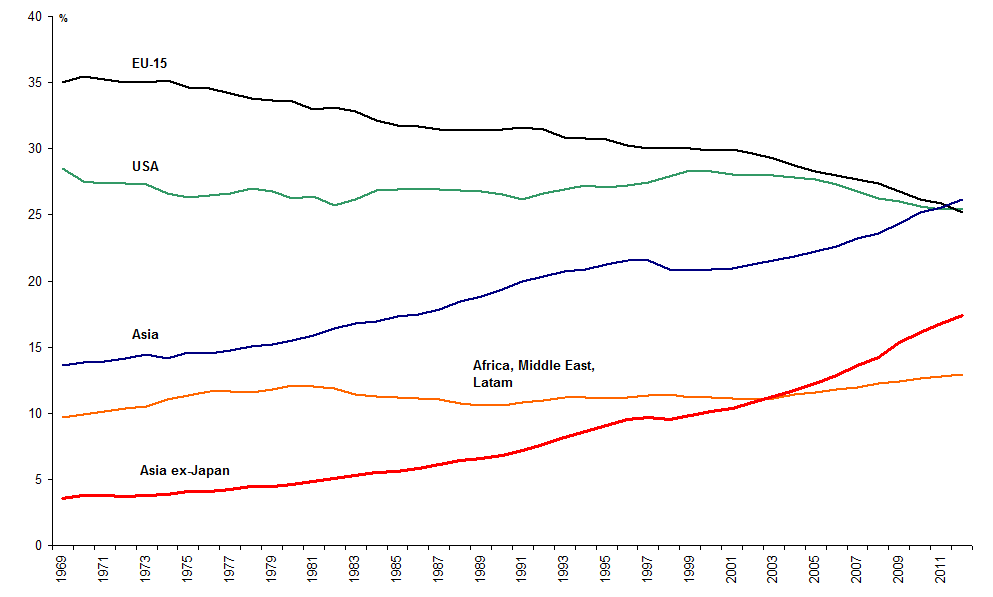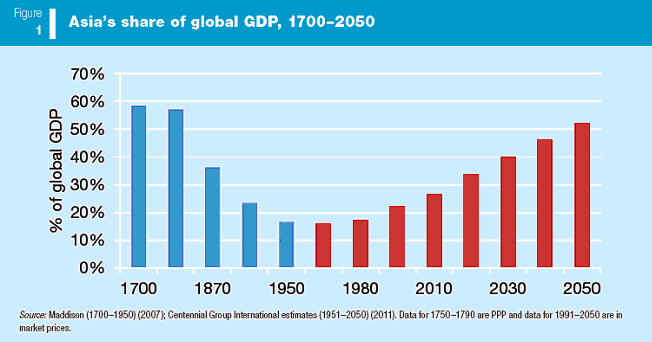In the book, “Imagining India”, Nandan Nilekani (co-founder and ex-CEO of Infosys and the current head of the national identity card project) tries to view the country in terms of the ideas that define it. He sorts them into four categories: ideas that have been accepted in the society; those that are under progress; those about which there is still considerable debate and disagreement; and those that will be relevant for the future, but are not receiving the attention they deserve.
As I kept reading the book, I found myself arguing with the author. While I had my preconceptions, I also found myself learning many new facts about India. Nilekani's understanding of the country is impressive, and his arguments are supported by well-researched data and statistics. As a co-founder of Infosys and one of the corporate leaders of India, he has had tremendous access to other leaders: finance ministers, Nobel Prize winners, economists, social workers, historians, and even a foreign country's prime minister.
This book is a "must-read" for anyone interested in understanding today's India and its future. It is the most balanced of the three books that I read recently about India, the other two being "India: The Emerging Giant" by Arvind Panagariya and "The Indian Renaissance: India's Rise after a Thousand Years of Decline" by Sanjeev Sanyal. Panagariya's book is packed with facts and figures, but much of it historical; Sanyal's book is good, good but does not address the challenges deeply. Nilekani's book not only discusses the issues deeply, but provides enough facts to support the arguments.
Accepted Ideas
Nilekani starts the first section with the argument that India has finally started viewing its people as assets rather than liabilities. He cites the now-famous concept of demographic dividend as the foundation of India's future. Of course, having led Infosys for many years, Nilekani cites the IT and BPO sectors as evidence of the positive role that a well-educated population could play. But as I read the chapter, I kept wondering if his views were not tainted by his IT experience. For instance, he does mention the fact that the southern states have crossed their peak period of demographic dividend, while the population of the lower-developed BIMARU (Bihar, Madhya Pradesh, Rajasthan and Uttar Pradesh) states are still growing and getting younger. But he does not discuss the implications of this split fully. Unless the BIMARU states manage to develop, and that too at a rapid pace, the population profile of those states may become a curse, and the current regional imbalances may intensify and lead to social problems.
Besides, how can one conclude that the human population of India has become its asset, when over 60% of the population still depends on agriculture for a living, and even in that sector, the labor productivity is very poor? Whether India's young demographic profile may turn into a blessing or a curse depends on how well other areas of the economy are reformed to produce the growth and jobs necessary to satisfy the people. And that is where Nilekani's other ideas become relevant.
Nilekani next discusses the acceptance of entrepreneurs in the society. He traces the dominating influence of Nehru's socialist policies on India's early economic path as an independent country, and their failure to produce sustainable growth. He then goes on to discuss the Bombay Plan devised by the industrialists as a compromise to the fiercely socialist government, and describes the eventual rise of the entrepreneur after Manmohan Singh's 1991 liberalization. As I read the chapter, I could not but feel angry and disappointed at the missed economic opportunities, thanks to the failed Nehruvian policies. I also remembered the futile rules that curtailed production of various products, even as demand was booming. (My father wanted to buy a Bajaj scooter in 1987 and found that he had to place a deposit and wait for three years for his turn to buy one; so he eventually bought one in the black market by paying a premium of about 25% of the actual cost, and had to run the scooter in someone else's name for a year before it could be transferred to his name!).
The overall thrust of the argument that private enterprise is now encouraged is fine, but it is difficult to agree with Nilekani when he says that the ineffectual economic policies are what bought the Congress down finally and led to the rise of multi-party democracy. In fact, in many other parts of the book, he does a masterly job of describing the rise of multiple identities that led to a regional and multi-party political system.
The other problem with this chapter, and indeed the whole book, is that Nilekani scarcely mentions the role of corruption in holding down India's development. There is no doubt that the nexus between the politicians, bureaucrats and businessmen twisted the system to their benefit rather than that of the common people. This omission also made me think about Dhirubhai Ambani, who had brilliant ideas about business (in particular, his conviction to build world-scale capacities and his use of capital markets), but who nevertheless manipulated the system to his unashamed advantage, including blatant scandals such as smuggling and duplicate share certificates. But now, there is even a book on “Ambanism” as if it is a legitimate economic philosophy!
The next accepted idea that Nilekani talks about is the growing use of English across the country and its almost universal acceptance by politicians. No disputes on this point, happily! It reminded me of a discussion in my business school about what unites India. After considering different ideas, we settled upon commerce and business that keeps India united. English is, of course, the glue that links Indians and keeps the commerce flowing.
Next to come is IT, Nilekani's home subject. His description of how Rajiv Chawla, a cunning bureaucrat, slipped computerization quietly into the land records system of Karnataka is hilarious. The government workers had not realized what was going on, and by the time they woke up, it had been done! It is indeed heartening to see IT being used in many key private sectors, such as banking, railways and insurance, and it is seeping into core government services.
When Nilekani talks about globalization as an accepted idea, he again falls back on IT as the main example. While that is indisputable, there is much work to be done to reap the benefits of globalization in the manufacturing, agriculture and financial sectors. There are good examples of some Indian manufacturing companies benefiting from access to global markets, but what has been achieved falls far short of the overall potential of the country. I am also not sure how Indian agriculture would react to globalization in terms of input and output pricing, as well as product choice. For instance, what kind of crops might be produced if all input and output are priced at international levels? Or, what kind of agricultural imports and exports might take place? Will Indian agriculture benefit from globalization without first eliminating the structural inefficiencies such as small farm holdings and land ceiling legislations? These are complex questions, but Nilekani does not carry the argument about agricultural globalization to its logical end. While he has covered so many important aspects in the book, I wish he had discussed the agricultural sector more thoroughly, instead of just mentioning it in passing in different contexts.
Nilekani's final accepted idea is democracy, and it is also one which I found most difficult to digest. For all its positives and ills, democracy is an idea that has finally been accepted in India as the political system of choice. Nilekani has provided a good description of the rise of regional parties and factions, but it is not clear what his judgment is about the phenomenon: is he just describing, bemoaning or celebrating? He argues that the caste, language and regional identities grew in prominence due to the failure of the state to provide broad-based growth. The question is not whether India has accepted democracy, but whether the current form of democracy is not turning into kleptocracy.
He believes that the new identities are coalescing into an Indian identity, but in my view, he is treading on thin ice when he says that. On the other hand, I feel that the multi-identity democracy is serving to hinder progress rather than enable it; and whatever progress is achieved is in spite of it rather than due to it. After all, how many regional parties have an overarching view of Indian progress and society? How many of them function on the basis of any principle, except that of taking care of their own supporters and constituents? At the extreme instances, when I think about the unprincipled bargaining between different parties, I only get the image of hyenas tearing at the prey from different directions, getting their fill of the meat. Finally, even Nilekani is forced to acknowledge the inescapable, but he still gives it a positive spin when he says, “this period of stonewalling, backtracking and accommodation is essential ... it is the only way we can frame policies that are truly sustainable.” It is a shame that even after 60 years of independence, a discerning writer like Nilekani has to call India's democracy young in trying to justify what is happening.
... Click here to read Part 2.



 RSS Feed
RSS Feed

